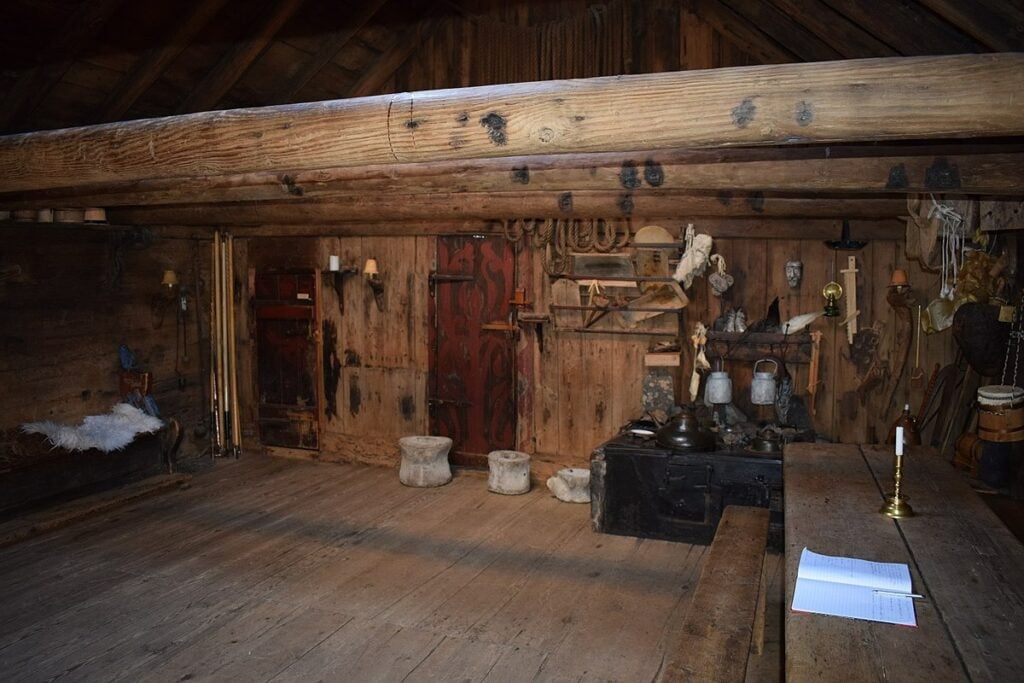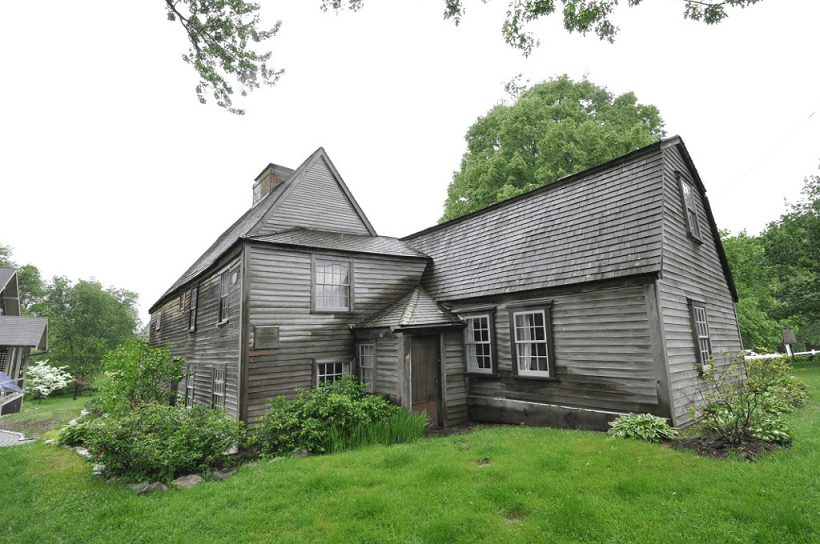Wood is a natural material used since ancient times to construct buildings. It is an excellent material for building structures because it’s easy to work with and can be shaped into the most amazing shapes. It’s also solid, which makes it ideal for building houses and other buildings.
Wood structures are typically built to last for decades, but it’s important to remember that the wood itself is a natural product and will eventually break down.
Although wood is a renewable resource, weathering and flattening are unavoidable with age. This makes the buildings on this list all the more remarkable.
Let’s look at some structures that have stood the test of time and discuss how they did it.
7. Santa María de Loreto de Achao
Year Built: around 1730
Location: Los Lagos, Chile
Use: Church

One of the earliest surviving traditional Chiloé churches, the Achao church was constructed in the 18th and 19th centuries and dates to the time of the Jesuit mission. It is a member of a collection of 16 recognizable wooden churches that were designated as a World Heritage site.
It was erected in wood with three naves by the Jesuits circa 1730 and was renovated in 1784 following a fire. As a result, the church is regarded as one of Chile’s oldest. The church’s tower is 22 meters tall, 14 meters broad, and 46 meters long. Larch shingles adorn the outside of the structure.
Did You Know?
Its skeleton is mainly built of manio and cypress, and many of its joints are held together by wooden pegs. The architecture of the church’s interior, which serves as a venue for services and other events, is influenced by baroque wood designs.
6. Fairbanks House
Year Built: between 1637 and 1641
Location: Massachusetts, USA
Use: House Museum
photo source: Wikimedia Commons
A historic home constructed between 1637 and 1641, the Fairbanks House is located in Dedham, Massachusetts.
Dendrochronology research has determined that it was built in 1641, making it the oldest timber-frame structure in North America. The farm home was built by Puritan pioneer Jonathan Fairbanks for his wife Grace and their children.
As a historic home museum, the Fairbanks residence is currently owned and run by the Fairbanks Family in America, a member-based non-profit organization. For more than 110 years, The Family Association has conserved, researched, and explained their family house and its belongings.
Did You Know?
The home was occupied up to the turn of the 20th century and then passed down through eight generations of the family.
5. Stålekleivloftet
Year Built: c.1300
Location: Vindlaus, Norway
Use: Museum
photo source: Wikimedia Commons
One of the oldest wooden structures in the world is Stalekleivloftet in Norway.
Folklore has it that this structure was the first storehouse built in Eidsborg and wasn’t built for anybody. However, a wealthy woman named Madame Staleleiv owned the majority of the neighborhood in 1200, and she may have had the storehouse built.
The land surrounding the storehouse was subsequently developed into a separate farm and given the name Lofthus. Finally, in 1840, the storehouse was relocated to the farm Vindlaus, which is now a portion of the Wet-Telemark Museum Eidsborg.
Did You Know?
Madame Stalekleiv’s sons built her this big storage so that she would have a place to keep all of her linen.
4. Roykstovan in Kirkjubø
Year Built: 11th-century
Location: Kirkjubøur, Faroe Islands
Use: Farmhouse, Museum

One of the world’s oldest still-inhabited timber houses is in Kirkjub, called Roykstovan. Before then, it was a portion of the bishop’s mansion, and it has been the farmers’ farmstead since 1557 and is more than 900 years old.
In the Faroe Islands, the farm itself has always been the biggest. The 11th century is when Kirkjubur’s original farmhouse was built. From 1100, it served as the Diocese of the Faroe Islands’ episcopal palace and monastery.
Did You Know?
According to folklore, the wood for the block buildings was precisely wrapped and numbered before being assembled. It was brought from Norway as driftwood.
3. Greensted Church
Year Built: between 998 and 1063
Location: Essex, England
Use: Church
photo source: Wikimedia Commons via originalpickaxe
The oldest timber church in the world, Greensted Church, is a historic worship site located deep into the Essex countryside. In fact, with a nave between 998 and 1063 AD, it is also the oldest wooden structure in Europe.
Sadly, the only portions of the original Saxon building still exist are the split oak tree logs that make up the nave. Nevertheless, the church was still in use following the Norman conquest of 1066, as evidenced by the minor amount of Norman-era flint found within the Chancel wall.
Did You Know?
The earliest burial, located close to the church’s entrance, belongs to a Crusader from the twelfth century who was likely a bowman.
2. Nanchan Temple
Year Built: 782
Location: Shan Xi Sheng, China
Use: Buddhist Temple
photo source: Wikimedia Commons
The Tang Dynasty’s Great Buddha Hall of Nanchan Temple was initially constructed in 782 CE, based on an inscription on a beam. Perhaps because of its remote position in the highlands, it evaded destruction during the Buddhist purges of 845.
According to another inscription on a beam, the hall underwent renovation in 1086 of the Song Dynasty, and all but four of the original square columns were swapped out for round ones.
Architectural historians discovered the building in the 1950s, and in 1961 China officially recognized it as the country’s oldest standing timber-frame building.
Since the Great Buddha Hall is the oldest timber-frame building still standing in China, it is an important building in the study of Chinese architectural history.
Did You Know?
According to HomeRevamp, the structure was destroyed by an earthquake in 1966, and historians had the opportunity to examine it piece by piece during the 1970s rebuilding era.
1. Horyuji Temple
Year Built: 607 AD
Location: Nara, Japan
Use: Buddhist Temple
photo source: Wikimedia Commons
The oldest wooden building in the world is Horyuji, one of Japan’s oldest temples. Prince Shtoku originally ordered the construction of the temple, which was then known as Wakakusadera and is still sometimes used today. It is said that the first temple was finished by the year 607.
In 1993, it received the title of the world heritage site. The expansive temple grounds of Horyuji are divided into the Western Precinct (Saiin Garan) and the Eastern Precinct (Toin Garan).
In honor of the prince’s father and Yakushi Nyorai, the Buddha of healing, Hry-ji was consecrated. Hry-ji played a significant role in the devotion of the long-dead prince during the Kamakura period when the religion of Shtoku gained popularity in Japan.
During this time, the number of rituals performed in honor of Prince Shtoku grew. Finally, early in the 12th century, Hry-ji instituted a memorial service for the prince known as the ceremonial of Shry-e, carried out today at the temple and other shrines dedicated to Prince Shtoku.
Did You Know?
The Nihon Shoki claims that lightning destroyed all structures in 670. But, on the other hand, it was rebuilt at least 1,300 years ago.
















